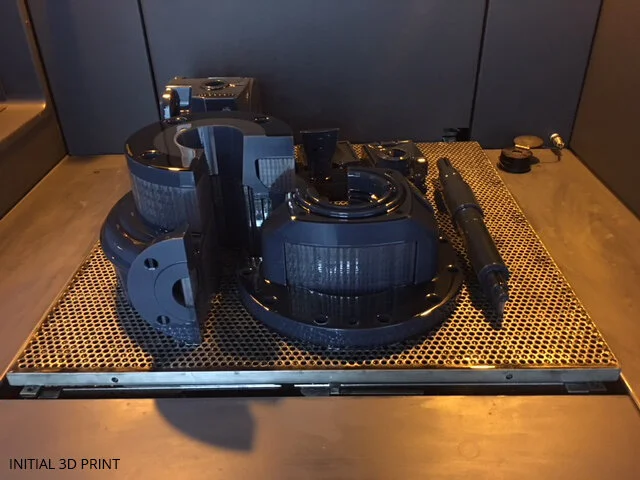It is no secret that prototyping is an important part of any product development process. Because SPARK tends to develop physical products for our clients, we often have the need for physical prototypes (not just wireframes of possible app screens or a process storyboard). Depending on the current needs of a project, the quality of these prototypes can vary greatly. On one end of the spectrum, the SPARK team may cobble together a proof-of-concept model from duct tape and baling wire in order to quickly prove or disprove an assumption. On the other end, our client may be going to a trade show like CES and they need a high-fidelity prototype that looks like and works like the real thing. The latter is when we turn to Bruce LeMaster and his team at Applied Rapid Technologies (ART).
ART has been around since the mid 1990’s, and SPARK has been turning to their team of craftsmen since our founding in 1997. Through his many years in the industry, Bruce LeMaster has developed a great depth of knowledge for various 3D printing methods, materials, and processes. When SPARK needs to select a means to prototype a plastic (or sometimes metal) part or product, all we have to do is give ART a call. After a quick description of how the prototype will be used, Bruce can recommend a material and process to get the job done. This can potentially save SPARK hours of sifting through the dozens of different 3D printing materials to find just the right one that balances function and cost. What really differentiates ART, and why we often recommend their services to our clients, is the quality of what they produce.
If you need a small and quick proof-of-concept model printed to verify fit or feel, SPARK has two desktop 3D printers in-house that can get the job done, but for something large, complex or precise, we will most often turn to Applied Rapid Technologies. ART’s cutting edge machines and talented team will (if desired) hand finish your part to give it the appearance of production-level injection-molded plastic. They are also very capable in the cast urethane process, where they 3D print a negative that is used to build a silicone mold. This mold can then be used for low-volume production (typically around 20 uses), allowing clients to have multiple production-quality parts before investing large amounts of capital in tooling.
We always keep samples of ART’s work in the SPARK offices so we can easily communicate the benefit of using ART to our clients. Bruce LeMaster has built an extremely capable business in Applied Rapid Technologies, which is why he and his team at ART have been a trusted partner that SPARK has turned to for many years.






